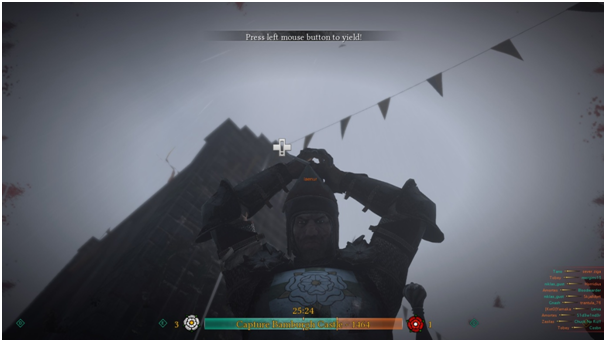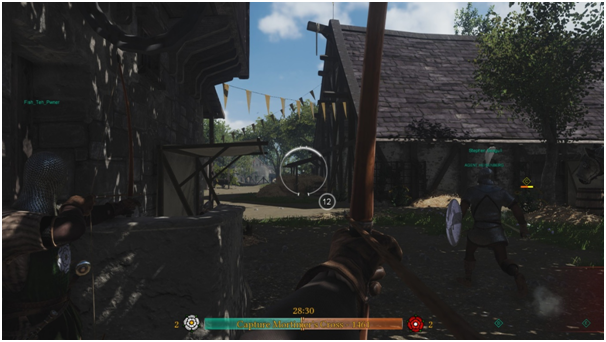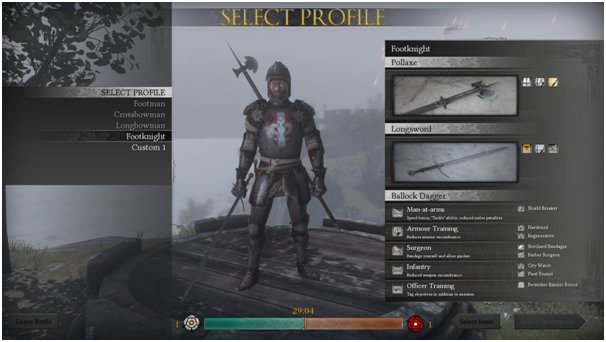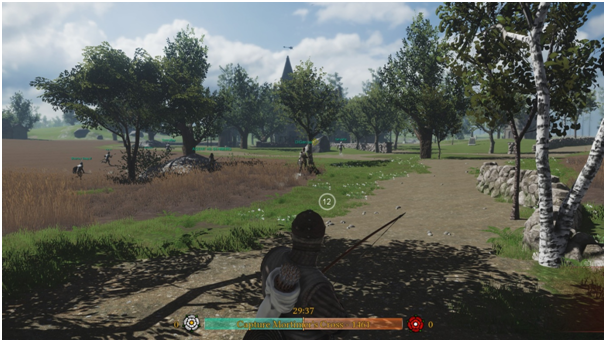If there’s one overriding quality to medieval slash-em-up War of the Roses, it’s the unmistakable fact that this is a game heavily influenced by its Paradox publishers. While this may seem like a strange statement to make, the telltale signs of a Paradox game are strewn all over this title. Although the base formula is very much original the unusual play style, steep learning curve, and obsession with detail that paradox are famous for all come to the fore in War of the Roses.
As I said, the base concept for the game is pleasantly refreshing. The game is online only, (bar the rather unhelpful tutorial levels) so prepare to have your blood levels raised in a manner only online competitive gaming can achieve.The game sees two teams of up to 32 per side battle it out with swords, spears, and bows in what is unavoidably a sort of 'Tudor Call of Duty'.
The melee and ranged combat have been translated well to the keyboard and mouse and while the control scheme may baffle to begin with, it takes a few hours of play to grasp the fundamentals of medieval swordplay. Movements of the mouse control your sword slashes and holding the right click down increases power over speed while left click allows you to block or parry. Duels tend to be a mix of players missing one another, blocks and the odd successful slash. The precision needed to achieve a good blow can be very tricky to acquire, but once you get the system down there’s no better control scheme for any current hack and slash title.
Matches are typically very open affairs with maps featuring wide spaces for large melees and archery positions (a system that is easier to grasp yet just as satisfying). While only Team Death Match and a Battlefield-esque Conquest mode are featured in the game, each battle has a slightly different nuance and feel to it. However, it must be noted that during battles War of the Roses is somewhat lacking in atmosphere. Unfortunately large chunks of time can be spent trekking from spawn point to action zone or from one capture point to another and it’s during these periods that the lack of audio depth is apparent. While the heat of battle invokes loud clashes of steel and up tempo music, the game feels rather empty outside of a huge melee. Some morale-raising medieval ballads would have been perfect during the games’ down times, so it’s a shame this simple technique wasn’t taken on board.
While audio content might be a tad lacking in depth, not to mention occasionally annoying (I’m looking at you voice-overs), the rest of the game is brimming with content. The maps while fundamentally similar do each offer a different visual setting, but it’s the character-based content and RPG-like class creation features that really shine. In another unavoidable relation to Call of Duty, players can assign their custom class perks such as the ability to carry a shield, wield a bow, or capture points quickly. There’s also the option to choose and customise your armor, weapons, and even your house insignia. Of these areas there are numerous choices from helmets to plated suits, broadswords to crossbows and countless design options for your badge. Plus, with each item carrying an in-depth description, this is where FatShark’s attention to detail really shines through by allowing the player to understand the time period and immerse themselves within it, something that they learned from extensive Grand Strategy experience.

Graphically War of the Roses fails to really reach the brass ring. A game so heavily focused on minute details would have translated better if we’d received beautiful battlefields and highly detailed character models. The final game is by no means hard on the eyes, in fact the weapons and armor all look great, but ideally War of the Roses could have been a visual spectacle to match the grand scale of the battles. From a company whose typical graphical capabilities rarely exceed a painted map, however, Paradox and FatShark have done an admirable job.

Beyond the initial learning curve, War of the Roses slowly allows itself to be mastered and it is in this mastery of the fighting system that the game really proves itself. There’s a fantastic pleasure to riding your horse (that’s right) through a group of enemy soldiers with a lance in hand, or spending what seems like an age to load your crossbow but pulling off a dead-eye shot from across a bloody battlefield. Other highlights include learning and mastering the parry system, plodding in to battle with a ridiculously heavy suit of armor or performing a miraculous comeback against more than one opponent. Like any competitive online game, War of the Roses is far more enjoyable when you’re on a roll, but only with dedication and time commitment will you get to that point.
So like almost every previous Paradox title War of the Roses is a game you should invest in but only if you are willing to make a commitment to it. This isn’t a walk in the Tudor park, War of the Roses will not go easy on you and you have to practice hard to get the most out of it. But I urge you to stick with it and by the time you’re actually getting quick kills you’ll enjoy the game too much to quit.